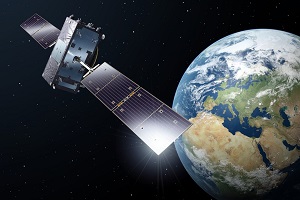Oracle has announced its plans to add semantic search capabilities using AI (artificial intelligence) vectors to Oracle Database 23c. The collection of features, called AI Vector Search, includes a new vector data type, vector indexes, and vector search SQL (structured query language) operators that enable Oracle Database to store semantic content of documents, images, and other unstructured data as vectors, and use these to run similarity queries.
These new capabilities also support retrieval augmented generation (RAG), a generative AI technique that combines large language models (LLMs) and private business data to deliver responses to natural language questions. RAG provides higher accuracy and avoids having to expose private data by including it in LLM training data.
“Oracle Database is the leading repository of business data, and the combination of business data and semantic data is what enterprises need to implement artificial intelligence solutions. Searches on a combination of business and semantic data are easier, faster, and more precise if both types of data are managed by a single database.” says Juan Loaiza, executive vice president, Mission-Critical Database Technologies, Oracle.
“By adding AI Vector Search to Oracle Database, we enable customers to quickly and easily get the benefits of artificial intelligence without sacrificing security, data integrity, or performance. Using Oracle AI Vector search does not require machine learning expertise. All database users, including developers and administrators, can learn to use it in less than 30 minutes.” adds Loaiza.
Oracle will also enable applications built on Oracle Database and Autonomous Database to add an LLM-based natural language interface, providing a simple and intuitive way for end-users to ask for data they need by just posing natural language questions. In addition, Oracle Database tools such as APEX (Advanced Performance Experimental X) and SQL developer will be enhanced with generative AI capabilities to enable developers to use natural language to generate applications or generate SQL queries without needing to write code.
Oracle Database 23c, code named “App Simple,” focuses on simplifying the way data professionals, developers, and data users interact with data by declaring their intended outcome instead of hand coding. Data systems will generate the solution leveraging new database technologies like JSON (JavaScript Object Notation) Relational Duality Views and AI Vector Search combined with new natural language interface capabilities.
Additionally, developers will be able to generate complete applications by combining these technologies with Oracle’s low-code APEX development framework. This approach represents future of data and application development and will enable large productivity gains.
“Vector search is fundamentally an OLTP feature, as it needs scalability, performance, and reliability. Vendors like Oracle that have a proven track record of delivering mission-critical OLTP will be the winners in this market. Oracle’s DNA (deoxyribonucleic acid) to deliver enterprise-class performance will be a key capability for its new vector-based offering, building on the trust and confidence that CxOs have developed for the Oracle Database.” says Holger Mueller, vice president and principal analyst, Constellation Research.
The latest updates to Oracle Database services and products include:
Modern Oracle database and AI application development
- Oracle Autonomous Database: Makes it simple for developers to extend existing applications with natural language capabilities by posing natural language questions directly to Autonomous Database. Autonomous Database takes an open, flexible API (application programming interface) approach to integrating LLMs so that developers can select the better LLM from Oracle or third parties to generate SQL queries to respond to these questions.
- Oracle Autonomous Database Free Container Image: Allows developers to create cloud-native applications with Autonomous Database using a free, downloadable image with same advanced capabilities as Oracle Cloud Infrastructure (OCI) Always Free Autonomous Database. By allowing developers to use Autonomous Database in the environment that suits their needs, including their own laptop, they get simplicity and power of a self-managing database, including all low-code, ETL, analytics, and reporting capabilities of Autonomous Database Data Studio, with ability to migrate application to cloud without needing to make any changes.
- Oracle APEX: Helps developers boost process of building secure, scalable, and feature-rich enterprise applications by using AI to convert natural language prompts into SQL queries and then creating desired app components. Additionally, APEX is introducing an integrated workflow and process automation capability that can invoke actions, trigger approvals, send emails, and more.
- GoldenGate 23c Free: Enables developers, DBAs, analysts, and students to use Data Integration and Data Mesh capabilities of GoldenGate for free. GoldenGate 23c Free features a new, highly simplified user experience that makes it simple for even novices to configure data replication and integration, as well as simpler and more intuitive run-time observability and diagnostics.
Next-generation Oracle Database service and products
- Oracle Database 23c: Is now generally available on Oracle Base Database Service in OCI. Base Database Service allows organisations to reduce operational costs by automating database lifecycle activities without requiring infrastructure management. It provides flexible virtual machine shapes across multiple instance types and pay-as-you-go pricing to simplify cloud deployment. Base Database Service now allows developers to benefit from all new Oracle Database 23c features in cloud. In addition, the Oracle Database 23c Free Developer Release, available since April 2023, has been refreshed with recent version of Oracle Database 23c.
- Oracle Exadata Exascale: The next generation of Exadata System Software lowers the cost of using Exadata technology for cloud databases and developers requiring smaller configurations. Now all workloads can benefit from high performance, availability, and simplicity of Exadata. Exadata Exascale combines cloud capabilities such as multitenancy, resource pooling, and pay-as-you-go with performance of database intelligent Exadata storage and RDMA (remote direct memory access), and enables a highly elastic database infrastructure both for on-premises and Oracle Cloud. It also features state-of-the-art storage-efficient database cloning capabilities to increase developer productivity and reduce costs. In cloud deployments, Exadata Exascale enables cost-conscious customers that need only a few cores of compute to get all benefits of Exadata, making power and mission-critical capabilities of Exadata available to small businesses and departments.
- Oracle Globally Distributed Autonomous Database: Helps customers simplify development and deployment of sharded or distributed application architectures for mission-critical applications that require compliance with data residency regulations, high availability, hyper-scalability, or low database access latency for globally distributed users. This distributed database offering is a completely managed OCI service that combines all benefits of Oracle Autonomous Database with customer control over data distribution policies.
- Autonomous Database Elastic Resource Pools: Helps customers improve their operating efficiency and reduce costs by consolidating all their databases in cloud using Autonomous Database. This enables customers to consolidate database instances into a pool that can scale up and down without downtime, potentially providing up to 87& compute cost savings compared to paying for each individual instance separately.
Trusted data fabric for AI
- GoldenGate 23c: Delivers high-availability replication with new Oracle Database 23c capabilities, easier runtime management, improved observability and diagnostics, and increased security. Highlights include exposing event-driven Data Streams using Asynch API, extended Maximum Availability Architecture (MAA) capabilities to support non-Oracle databases and shared databases, and improved runtime health checks. A new streaming insert and AI vector embedding capability enables Oracle GoldenGate 23c to capture, move and generate AI vector embeddings in real-time for enterprise data transactions for use by generative AI and analytics.
- OCI GoldenGate: Delivers support for 40+ new data connections from Oracle and non-Oracle sources across multicloud environments, including AWS, Azure, and Google Cloud Platform, as well as Streaming Analytics with real-time vector embeddings.
- Oracle GoldenGate Veridata 23c (Beta): Helps customers compare one set of data to another, identifies data that is out-of-sync, and repairs incorrect data. This recently released features a new browser-based, self-service user experience, new advanced job monitoring, and a new distributed agent to capture transactions.
Oracle Database infrastructure for small and medium businesses
- Oracle Database Appliance X10: Makes it simple and economical for small and medium sized organisations and business units, including those with distributed locations, to deploy and manage their Oracle databases, applications, and infrastructure. The recent release of this database-optimised engineered system provides enhanced end-to-end automation, and up to 50% more performance than previous generation, enabling customers to deploy Oracle Database workloads with better price-performance and minimal IT (information technology) skills.










